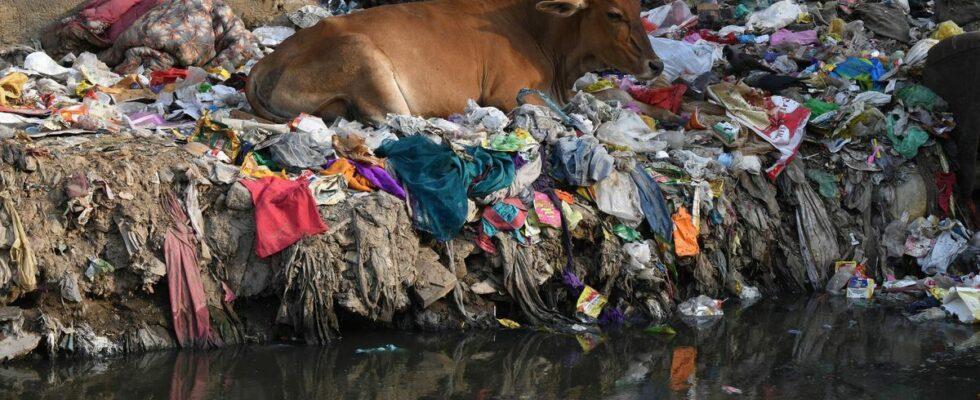Published on
updated on
Reading 2 min.
India is the world’s biggest plastic polluter, according to a global inventory of the problem published Wednesday by a team of researchers, who highlight the dangers of the frequent use of wild burning of this waste.
The authors, researchers from the University of Leeds who are publishing in the journal Nature, calculated that 52.1 million tonnes of plastic were released into the environment in 2020.
India is the biggest polluter, with 9.3 million tonnes of plastic, almost a fifth of the global total, reflecting its large population but also the fact that most of the waste there is not collected.
This uncollected waste is also the main source of plastic pollution in southern countries, according to the study.
India is followed by Nigeria (3.5 million) and Indonesia (3.4 million).
China (2.8 million), which was considered the biggest polluter in previous assessments, only ranks fourth in the study.
This “reflects our use of data that are more up-to-date and show substantial progress in the adoption of waste incineration and controlled landfill,” the authors say of China.
They used artificial intelligence tools to model waste management in more than 50,000 municipalities.
They hope their findings – which complement other, sometimes contradictory assessments by the UN and the OECD – will feed into leaders’ discussions in Busan, South Korea, later this year, aimed at setting in stone a first global treaty to combat plastic pollution.
“In the past, policymakers have struggled to address this problem, partly because of a lack of good quality data.“, said Ed Cook, one of the study’s authors. He said he hopes the study will allow them to “to allocate scarce resources to effectively tackle plastic pollution“.
According to researchers, some 30 million tonnes of plastic (57% of the total released into the environment) were burned without any control in 2020. However, these incinerations in homes, on the street or in fly-tipping areas can have dangerous effects.
“Setting fire to plastic may seem to make it ‘disappear’ but burning it in the open can result in substantial damage to human health – including birth defects, neurodevelopmental or reproductive harm – and a much wider dispersion of environmental pollution.“, underlines Costas Velis, the main author.
